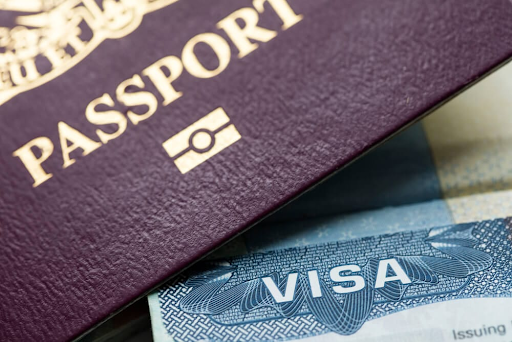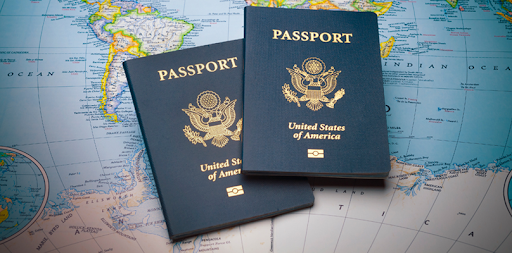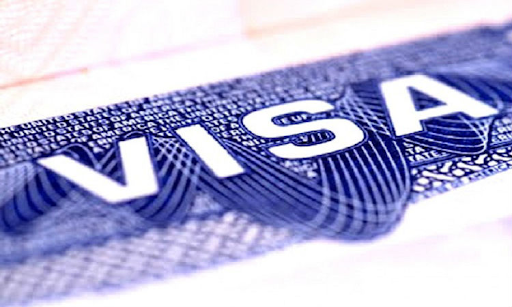While many individuals mistakenly consider a eTA and a passport to be interchangeable, these are distinct documents, both vital for international travel. Several nations maintain eTA agreements permitting their citizens to journey without a eTA, but for the majority of international travel, a passport is a mandatory requirement.

-
A table on the difference between a passport and a eTA
| Feature |
Passport |
eTA |
|
Purpose
|
A national travel document used as identification
|
An entry permit to another foreign country
|
|
Issuing authority
|
Government of your birth country or current country of residence
|
Embassy/Consulate representing a foreign country
|
|
Required for travel
|
In most cases, yes
|
Not required if there is a eTA facilitation agreement between two countries
|
|
Validity period
|
Usually 5 to 10 years
|
Usually a few days to a few months
|
|
Number of eTA required
|
One valid passport from one country is sufficient to travel
|
A eTA from each destination country is required for entry
|
Types of Passports: Exploring Passport Varieties
Diverse types of passports are issued to cater to different needs and situations:
- Regular Passport: This is the standard national passport provided to the majority of a country's citizens.
- Service Passport: Issued to government officials and their dependents who are travelling for work-related purposes.
- Diplomatic Passport: Diplomats and their dependents receive diplomatic passports for international travel and residence, typically associated with a state mission. However, it's important to note that possessing this type of passport does not automatically grant diplomatic immunity; the privileges granted to diplomats are determined through discussions with the host country.
- Emergency Passports: In scenarios where individuals have lost or had their passport stolen and require a swift replacement for international travel, emergency passports are issued. These passports are generally temporary until a regular passport is prepared.
- Collective Passports: Collective passports are designed for group travel situations, such as students on a school trip.
- Family Passports: Family passports serve as joint travel documents issued to an entire family. While one individual holds the passport, other family members are included within the same document. Although this practice used to be common for parents and their young children, many countries now mandate separate travel documents for each family member.
EXAMPLE OF A PASSPORT

Other Travel Documents: Beyond conventional passports, certain countries issue specific travel documents to serve similar purposes:
- Refugee Travel Document: Individuals classified as refugees and unable to utilise their original national passports are issued refugee travel documents. These documents are standardised for those recognized as refugees under the Geneva Convention, with each asylum-offering country providing such documents.
- Interpol Travel Document: This travel document streamlines international travel for Interpol officers engaged in transnational crime investigations.
- Certificate of Identity: Non-citizen residents, often stateless individuals, receive a certificate of identity. The "Nansen passport" is a notable example of this type.
- Travel Permits: Some nations issue travel permits to facilitate the travel of residents facing situations that prevent the use of their passports. Examples include the Japan re-entry permit, US re-entry permit, Australia Immicard, and Chinese travel document, which replaces regular passports issued by the People’s Republic of China.
Explore these passport variations and travel documents to better understand the array of options available for international travel.
Diverse eTA Types for Various Travel Purposes
The realm of travel eTA encompasses a diverse array of types, each tailored to specific travel intentions and objectives. From leisure and business to study and diplomatic visits, these eTA categories cater to various purposes, ensuring a comprehensive framework for international travel. A range of eTA types is available, each suited to specific travel intentions:

- Tourist eTA: Typically granted for 30 to 90 days, a tourist eTA allows visits to specific countries for leisure purposes. While some nations offer tourist eTA with up to 10 years of validity, entries might be restricted over intervals.
- Transit eTA: Issued for travellers with connecting flights, transit eTA enable passage through a country during layovers. Valid usually for 24 hours, they can also span ten days to two weeks.
- Business eTA: Intended for conducting business abroad, the validity of a business eTA varies based on the nation and the nature of the business, often extending over several months.
- Medical eTA: Issued when individuals need medical treatment abroad, the duration of a medical eTA depends on the patient's medical requirements.
- Student eTA: Students pursuing degrees overseas are granted student eTA, aligning with the duration of their study programs.
- Work eTA: This eTA suits foreign employees and typically mirrors the work contract's tenure, with extension possibilities.
- Working Holiday eTA: Generally spanning one to two years, this eTA type facilitates travel and work in specific industries for individuals exploring foreign countries.
- Pilgrimage eTA: Issued for religious journeys like the Hajj pilgrimage.
- Retirement eTA: Designed for individuals of retirement age who can financially support themselves abroad during their post-career years.
- Immigrant eTA: These eTA grant permanent residency in a foreign nation.
Global Passport Rankings as of 2023
The Japanese passport stands as the most powerful, offering eTA-free access to a majority of countries. In contrast, Afghanistan issues the weakest passport, allowing entry to only 26 eTA-free countries.
eTA Accessibility: Easiest and Toughest Countries
Certain countries exhibit varying levels of eTA accessibility:
- Lithuania, with a mere 1.3% rejection rate
- Estonia, boasting a 1.6% rejection rate
- Finland, showing a 1.7% rejection rate
- Iceland, also with a 1.7% rejection rate
- Latvia, experiencing a slightly higher 2.1% rejection rate
- North Korea
- Somalia
- Afghanistan
- Saudi Arabia
- Bhutan
These insights shed light on the diversity in eTA types, passport strength, and global eTA processing.
Acquiring a eTA: Step-by-Step Process
Navigating the process of acquiring a eTA involves a well-defined series of steps designed to ensure a smooth and organised experience for travellers. From initial application to document submission and decision, understanding this step-by-step process is essential for successful eTA acquisition. To obtain a eTA when required, follow these steps:
- Select the Right Representation: Apply for a eTA at the embassy or consulate representing the country you intend to visit.
- Prepare for Application: Ensure you possess a valid passport that remains so for at least three months after your departure date. It's essential to have your passport before initiating the eTA application process.
- Submit eTA Application: Complete and submit the necessary eTA application forms along with any required documents to the designated embassy or consulate.
- Passport Stipulation: In most cases, you'll need a passport with a validity extending three months beyond your intended departure date. Thus, acquiring a passport is often the initial step before pursuing a eTA.
Post-eTA Approval Procedure
Once your eTA application is approved, specific actions occur:
- Stamping in Passport: Typically, the embassy or consulate will place a eTA stamp within your passport. However, it's important to note that recent changes in eTA procedures have led some countries to issue eTA as separate documents.
- Alternative eTA Formats: Some countries have started providing electronic eTA (eTA), which are not stamped directly onto your passport. Instead, you receive a separate document or an electronic confirmation that you must print and carry along. This alternative applies particularly to eTA, streamlining the entry process.
Understanding these steps and potential variations in eTA issuance can help streamline your international travel preparations.
FAQS
What is the difference between a eTA and a passport?
A passport is an official document issued by your country of citizenship, serving as your identification for international travel. A eTA, on the other hand, is an endorsement or permission provided by the destination country's authorities that allows you to enter and stay within their borders for a specified purpose and duration.
Are there different types of passports?
Yes, there are various types of passports, including regular passports for citizens, service passports for government officials, diplomatic passports for diplomats, emergency passports for quick replacements, collective passports for group travels, and more.
What are the common types of eTA?
Common types of eTA include tourist eTA for leisure travel, transit eTA for connecting flights, business eTA for conducting business activities, student eTA for pursuing education abroad, work eTA for employment, and medical eTA for receiving medical treatment in another country.
How can I apply for a eTA?
To apply for a eTA, you need to submit an application at the embassy or consulate of the country you plan to visit. You'll need to fill out the required forms and provide necessary documents, such as your passport, photographs, and any specific documentation depending on the type of eTA you're applying for.
Can I travel with just a passport?
While a passport is a fundamental requirement for international travel, it's not sufficient for entry into most countries. In addition to a passport, you'll often need a valid eTA, which grants you permission to enter and stay in the destination country.
What happens after I receive a eTA?
Once your eTA application is approved, it's usually stamped into your passport by the embassy or consulate. However, some countries have adopted electronic eTA (eTA), which are issued separately and may not require a physical stamp in your passport.
Can I travel without a eTA?
Some countries have eTA-free agreements, allowing citizens of certain countries to visit without obtaining a eTA beforehand. However, most international travel requires a eTA, so it's crucial to research and plan ahead.
How long does a eTA typically last?
The duration of a eTA varies depending on the type of eTA and the policies of the destination country. Tourist eTA may last from a few days to a few months, while work or student eTA might be valid for the duration of your employment or study program.